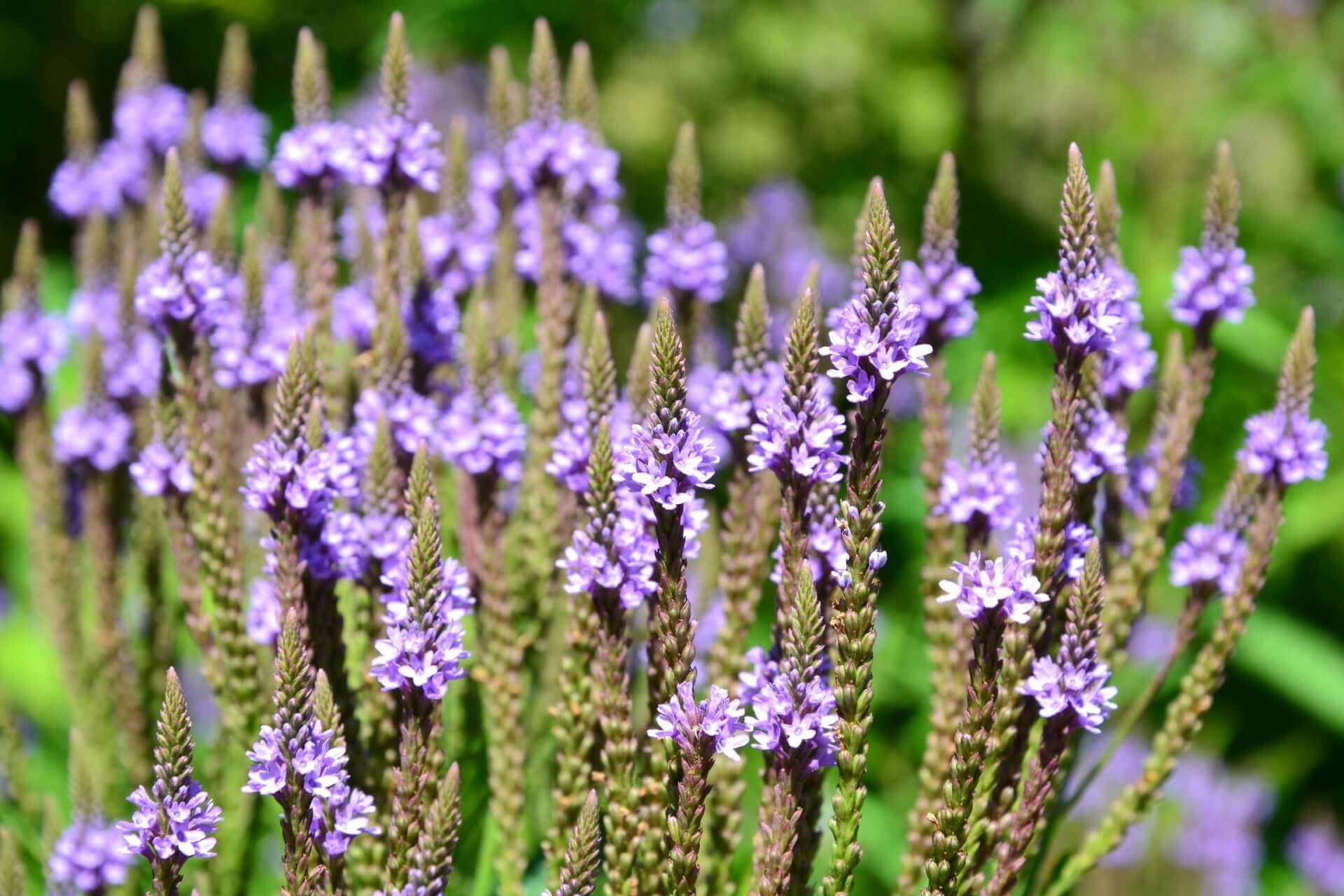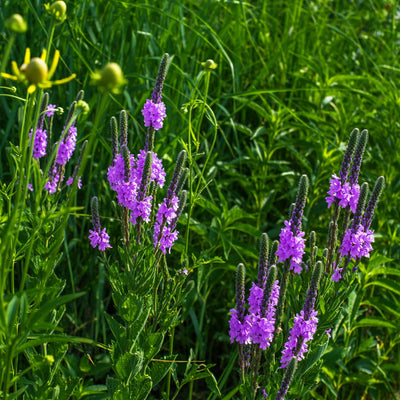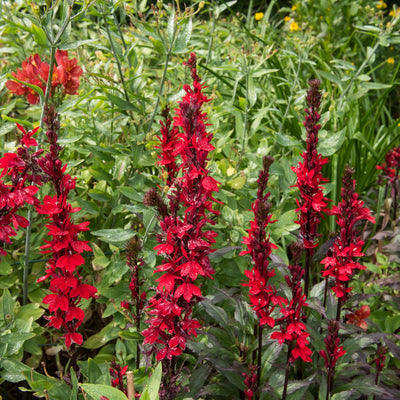Blue Vervain
Blue vervain is a lovely perennial herb that has captured the attention of gardeners and herbal enthusiasts alike. Its vibrant blue-purple spikes of flowers, tall and elegant stature, and numerous medicinal and culinary uses make it a captivating addition to gardens.
Blue vervain can be found in various regions, from wet meadows to open woodlands. It's known for its adaptability to different soil types, making it suitable for cultivation in many climates. However, it's crucial to provide the optimal growing conditions for the most successful cultivation of blue vervain.
Selecting the right location is the first step when growing blue vervain. This herb flourishes in whole sun to partial shade, making it adjustable to different light situations. Ideally, choose an area that acquires at least 6-8 hours of sunlight per day but can tolerate some shade if necessary. Ensuring good drainage is essential, as blue vervain prefers moist to slightly wet soil. The soil should be loamy and well-draining to prevent soggy roots.
Blue vervain prefers a slightly alkaline to neutral pH range of 6.0 to 7.5 regarding soil pH. You can improve the soil's pH by adding lime to create the ideal conditions for this herb to thrive.
Once you've identified the right location, it's time to consider the planting method. Blue vervain can be propagated from seeds or transplanted from established plants. Starting from seeds allows you to control the growth process from the beginning.
To grow blue vervain from seeds, prepare a seedbed in early spring or late winter. Ensure the soil is adequately prepared, free of weeds, and well-draining. Please spread the seeds evenly on the soil's surface, gently pressing them down without burying them too deep. They need light to germinate. Water the area thoroughly and maintain consistent moisture until the seedlings emerge, typically taking 2-4 weeks.
Once they are a couple of inches tall, thin them out for sufficient spacing. Blue vervain plants should be spaced about 12-18 inches in between to allow for their mature size, varying from 3 to 5 feet in height. The dirt stays consistently moist during the growing season to support healthy growth.
Fertilization for blue vervain is generally minimal. It doesn't require heavy feeding like some other plants. A level, all-purpose fertilizer can be involved in early spring, but be cautious not to over-fertilize, as this can direct to extreme foliage growth at the cost of flowers.
One of the appealing aspects of growing blue vervain is its low maintenance requirements. Once established, it is a robust plant that can withstand various weather conditions, including moderate drought. Additionally, blue vervain is not highly susceptible to common pests and diseases, making it a resilient addition to your garden.
Blue Vervain Has Striking Flowers
As the summer progresses, blue vervain will reward you with its striking spikes of blue-purple flowers that attract pollinators, including butterflies and bees. These blooms add visual interest to your garden and contribute to local ecosystems by providing nectar for beneficial insects.
Harvesting blue vervain is satisfying, allowing you to harness its medicinal and culinary properties. The timing of the harvest depends on your intended use for the plant. Suppose you are primarily interested in utilizing blue vervain for its medicinal benefits. In that case, it's best to harvest the aerial regions of the plant, including the leaves and blossoms, just before it reaches full bloom. This stage typically occurs in late summer to early fall.
Use sharp trimming shears to evade damaging the plant when gathering. Cut the stems at the desired length, leaving some growth behind to encourage regrowth and maintain the plant's overall health. Be mindful of pollinators and other beneficial insects visiting the flowers during the harvest.
Once you've harvested the blue vervain, it's time to prepare and preserve the plant material. You can dry the leaves and flowers by hanging them upside down in a well-ventilated area for medicinal use. Ensure the area is dry and free from direct sunlight to retain the herb's medicinal properties. Once completely dry, store the dried blue vervain in an airtight container away from light and moisture.
Blue vervain has a long history of use in traditional herbal medicine for its potential benefits in addressing various health concerns. It is believed to have anti-inflammatory, soothing, and diuretic properties. Some common uses for blue vervain include.
A tincture can be made by macerating blue vervain in alcohol or glycerin for several weeks. This method allows for longer preservation of the herb's medicinal properties. A typical dosage of blue vervain tincture is 20-30 drops, diluted in water, taken up to three times daily.
Beyond its medicinal applications, blue vervain also holds culinary potential. The leaves of blue vervain have a slightly bitter flavor, which can be used sparingly to add a unique flavor to salads and soups or as a garnish for various dishes. The bitterness can be balanced with other herbs and spices to create intriguing flavor profiles. Experimenting with blue vervain in your culinary endeavors can lead to discovering new and exciting taste combinations.
In addition to its taste, blue vervain's vibrant blue-purple flowers can be a stunning addition to edible flower arrangements, providing an attractive and colorful touch to salads or desserts. When using blue vervain in the kitchen, remember that moderation is vital, as its bitterness can become overpowering if used excessively.
Blue Vervain Supplies Nectar To Pollinators
Blue vervain also offers value beyond its culinary and medicinal uses. Supplying nectar to pollinators such as butterflies and bees sustains local ecosystems. Cultivating blue vervain in your garden contributes to your environment's overall health and biodiversity. Observing these pollinators as they visit the blue vervain blooms can be a rewarding experience that connects you to the natural world.
In addition to its ecological benefits, blue vervain has historical and cultural significance. Native American tribes, such as the Cherokee and Iroquois, have a long history of using blue vervain for various purposes, including ceremonial rituals and traditional medicine. Learning about the cultural significance of this plant can deepen your appreciation for its presence in your garden.
Growing and harvesting blue vervain can also be a fulfilling experience for those interested in herbalism and native plant cultivation. It allows you to connect with the wisdom of traditional herbal knowledge and develop a deeper understanding of the plants that have been used for generations to support health and well-being.
Blue vervain's beautiful, spiky flowers attract pollinators, making it an excellent choice for ornamental gardening. Its tall and upright growth habit adds vertical interest to garden beds and borders. The striking blue-purple blooms can complement a variety of garden color schemes, making blue vervain a versatile choice for landscape design.
To enhance the ornamental appeal of blue vervain in your garden, consider planting it alongside other native perennials or wildflowers that bloom at different times of the year. This can create a visually captivating display throughout the seasons, attracting human admirers and pollinators.
In conclusion, growing and harvesting blue vervain can be rewarding for gardeners and herbal enthusiasts. This versatile herb offers beauty, ecological benefits, and a range of medicinal and culinary applications. By providing the right growing conditions and practicing mindful harvesting techniques, you can enjoy the many facets of blue vervain while contributing to the well-being of your garden and local ecosystem. Blue vervain is a valuable addition to any garden, whether you're interested in its therapeutic properties, culinary potential, or role in supporting pollinators. So, consider incorporating this remarkable herb into your gardening journey, and you may find yourself enchanted by its many charms.


